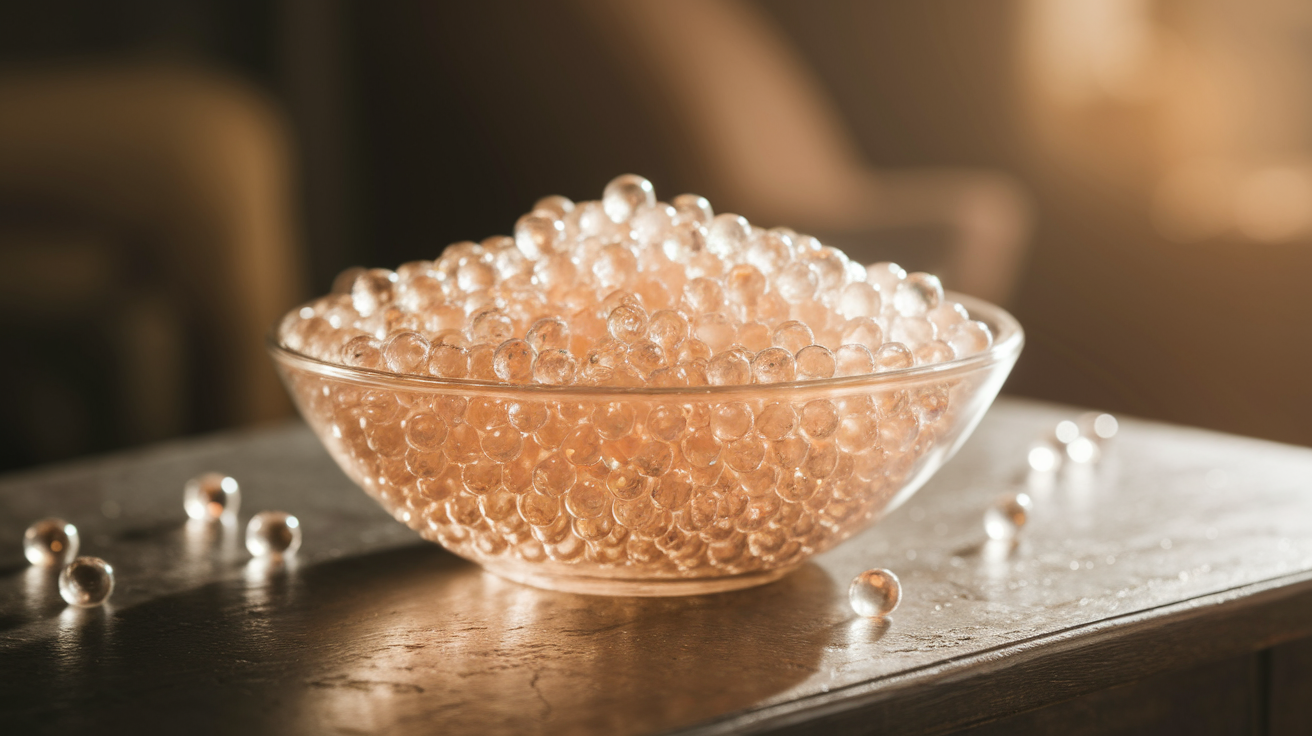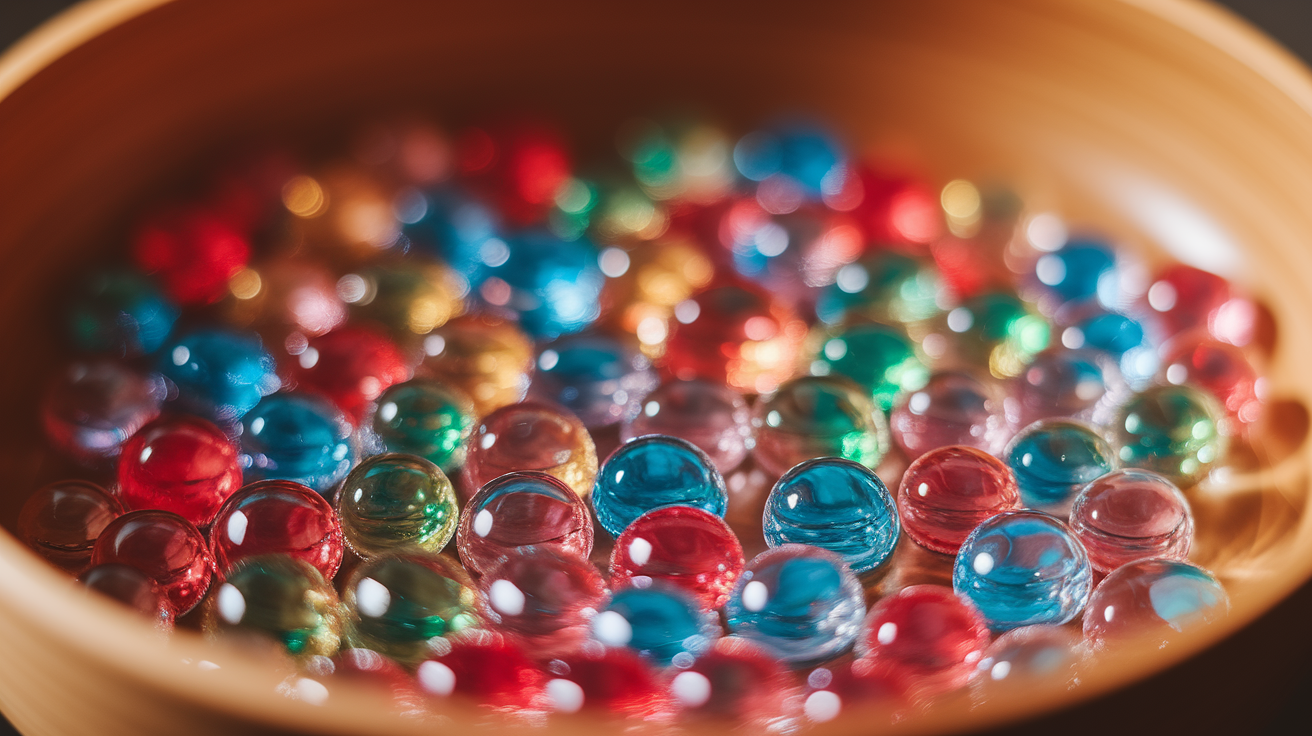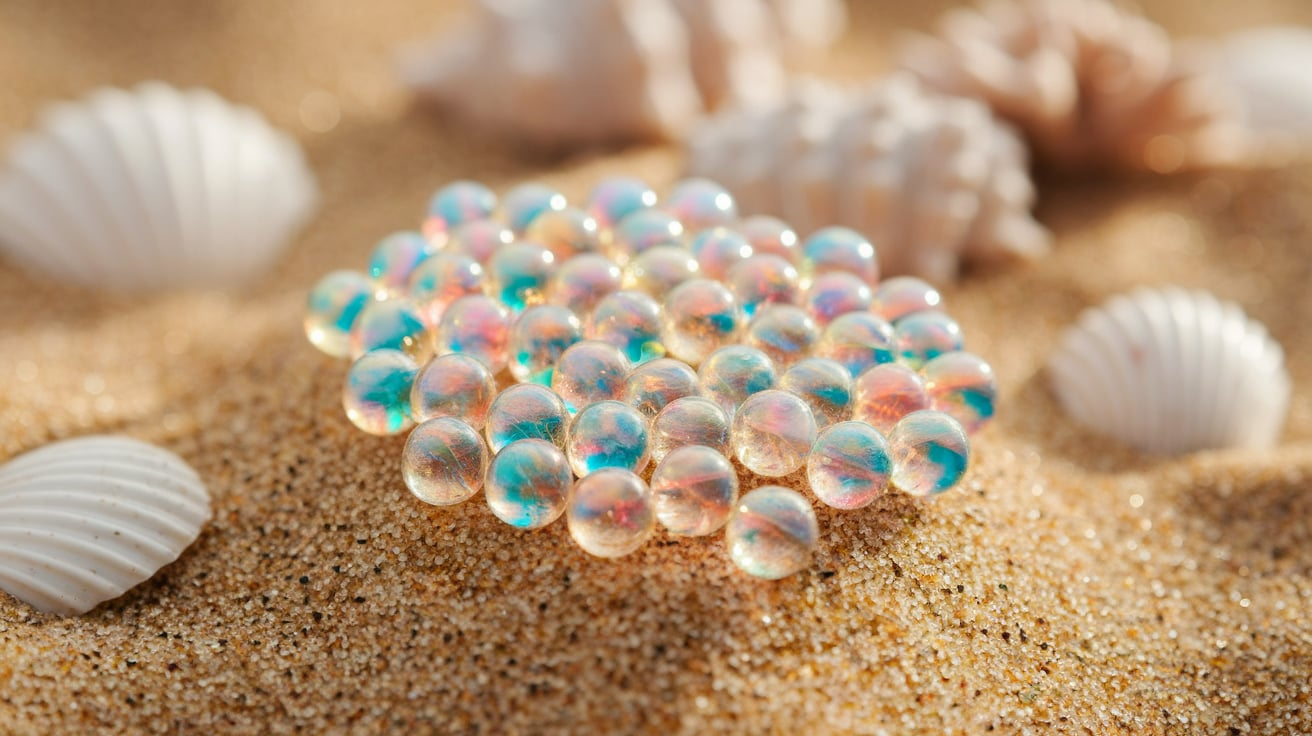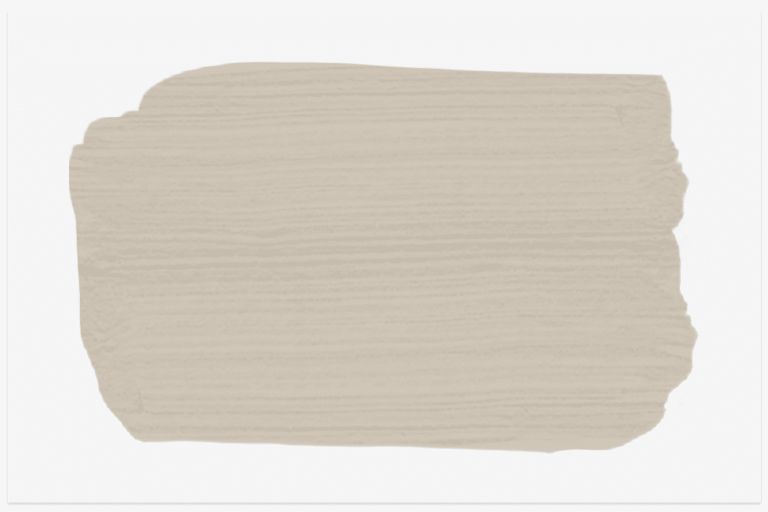How Long Do Water Beads Last

Water beads are popping up everywhere these days—from kids’ sensory bins to beautiful wedding centerpieces. They’re colorful, fun, and surprisingly useful. But one common question keeps coming up: How long do water beads really last?
In this blog, you’ll find everything you need to know about water bead lifespan, from the first soak to the best ways to store them for future use.
If you’re a parent looking for long-lasting sensory fun, a decorator planning your next big event, or just curious about these interesting little spheres, you’re in the right place.
Let’s get in and find out how to keep your water beads fresh, vibrant, and lasting as long as possible!
What are Water Beads Made of
Water beads are made from a remarkable material called superabsorbent polymer (SAP), primarily sodium polyacrylate, combined with food-grade coloring to create their vibrant appearance.
These tiny, dehydrated spheres work like microscopic sponges; each hard bead contains long chains of molecules that can absorb and hold 100-300 times their weight in water.
When water touches the bead, these polymer chains unfold and expand, creating a gel-like structure that traps the liquid inside. This causes the bead to grow dramatically in size while maintaining its spherical shape.
While the material itself is non-toxic, it’s important to note that these beads pose a serious choking hazard for small children and pets. Their small size, bright colors, and smooth texture can make them tempting to put in mouths.
How Long Do Water Beads Last

Water beads can be fun for both kids and adults. They have different lifespans based on how you use them. I’ve worked with these small, squishy balls for years and want to share what I’ve learned about their durability.
For Sensory Play
When used for daily play, water beads usually stay good for about 1-2 weeks. My kids love to squish and feel them, but this constant handling makes them break down faster. The oils from our hands, soap bits, and dirt all make the beads wear out more quickly.
They start to feel sticky after a week of regular play. Sometimes they even grow mold if left wet too long. This is normal – they are, after all, mostly water!
A Tip: Rinse them daily with clean water to make them last longer. This helps wash away the oils and dirt that speed up their breakdown.
For Decoration
If you want to use water beads for home decor, you’ll be happy to know they last much longer – about 2-3 months in vases or bowls.
Keep them out of direct sun, though! Sunlight makes the water inside them dry up fast. Over time, even indoor beads will get cloudy or change shape. This is a sign they’re reaching the end of their useful life as decor items.
In Sealed Containers
Water beads can last for up to two years with proper storage. The key is to ensure they are completely dry before storing them. Any remaining moisture can lead to mold growth.
To dry them, spread the beads out on a towel for one to two days until they shrink back to their original small size. Once fully dried, they should be stored in a zip-top bag or an airtight container.
When rehydrated, water beads may not grow as large as they did during their first use. After three to four cycles of rehydration, the beads typically lose their ability to expand properly, signaling that it’s time to replace them with new ones.
Factors That Affect Water Bead Longevity
Several everyday factors can impact how long water beads stay in good condition. Paying attention to these small details can help make them last longer and stay looking fresh.
- Water Quality: Hard water can cause the beads to break down faster, while chlorinated water may weaken the polymer structure over time. Using distilled or filtered water is the best option, as it helps the beads stay stronger and last much longer.
- Handling Frequency: Frequent touching causes beads to wear out faster, and oils from hands can break down their surface, making them weaker. Rough handling may also create tiny tears, leading to quicker damage over time.
- Sunlight Exposure: Exposure to direct sunlight can speed up water evaporation from the beads and cause UV rays to break down the polymer material. This can make the beads shrink or crack.
- Temperature Conditions: High heat speeds up both evaporation and breakdown, while very cold temperatures can cause the beads to crack and lose their shape. Storing them at room temperature, ideally between 65–75°F, is the best way to maintain their condition.
- Cleanliness: Keeping water beads clean is important for their longevity. Dirt, food particles, and soap residue promote bacterial growth, and mold can form quickly in dirty water, making the beads unsafe.
- Container Material: The type of container used for storing water beads also matters. Non-porous containers like glass or plastic are best, as they protect the beads without introducing harmful elements. Metal containers should be avoided because they may release substances that break down the polymer. Using containers with lids can also slow down evaporation.
- Humidity Levels: Low humidity causes faster evaporation, while high humidity can promote mold growth if beads stay too damp. Maintaining a moderate humidity level, around 40–60%, is ideal for preserving the quality and lifespan of water beads.
Different Types of Water Beads
| Type of Water Beads | Key Features | Size When Hydrated | Notes |
|---|---|---|---|
| Standard Water Beads |
|
8–10 mm | Simple, versatile option |
| Jumbo Water Beads |
|
15–20 mm | Takes 24–48 hours to hydrate fully; more expensive |
| Specialty Glow Beads |
|
Varies (Similar to standard) | Great for kids’ activities and parties |
| Scented Water Beads |
|
Similar to standard beads | Scent lasts 1–2 weeks |
| Biodegradable Water Beads |
|
Similar to standard beads | Shorter lifespan; eco-conscious choice |
| Crystal Soil Beads |
|
Smaller than standard | Slow-release water for plants; not as smooth or bouncy |
How to Make Water Beads Last Longer
Water beads are fun and easy to use, but a little extra care can make them last much longer. Follow these simple tips to keep your water beads fresh, clean, and in good shape for months—or even years!
- Change the water every 3–5 days to prevent bacteria buildup and keep the beads fresh.
- Rinse the beads with clean water if they start feeling slimy or sticky.
- Remove any broken beads right away, as damaged beads can affect the others around them.
- Dry the beads completely by spreading them on a towel before storing them away.
- Store beads in airtight containers in a cool, dark place to slow down evaporation and prevent mold.
- Label storage containers with the date and bead color to make it easy to track freshness.
- Use distilled or filtered water instead of tap water to hydrate the beads for better results.
- Avoid water with high mineral content, which can damage and weaken the beads over time.
- Never use hot water, as it can break down the beads’ polymer structure and shorten their life.
- Wash your hands before handling water beads to prevent transferring oils and dirt.
- Use scoops or spoons instead of hands whenever possible to reduce wear and tear.
- Keep beads away from lotions, soaps, and oils, as these substances can damage the surface and cause them to break down faster.
When to Replace Water Beads

When you notice several clear warning signs that your water beads have reached the end of their useful life, it’s time to replace them.
Watch for beads that have become mushy, sticky, or break apart easily when touched, as these textures signal that the polymer structure is breaking down.
Be alert to any unusual cloudiness, discoloration, or an unpleasant smell, which typically indicates bacterial growth or mold contamination that can’t be remedied with simple rinsing.
Also, pay attention to an increasing number of broken or misshapen beads in your collection, or if they’ve developed a slimy film that persists after rinsing.
Final Thoughts
Water beads aren’t forever friends, but with proper care, they can stick around for quite a while. Remember that how you use them plays the biggest role in their lifespan.
Decoration beads typically outlast those used for regular play. The good news is that even when they do eventually break down, replacing them is relatively inexpensive.
And by following the storage and care tips covered here, you’ll definitely get the most value for your money.
Understanding their lifecycle helps set realistic expectations and maximizes your enjoyment of these interesting little spheres.
Frequently Asked Questions
Can Water Beads Be Reused After They Dry Out?
Yes, water beads can be reused after drying out. Soak them in water again to rehydrate them to their original size and texture.
Are Water Beads Safe for Children to Play With?
Water beads are safe for older children under adult supervision. However, they should not be used by babies or toddlers due to choking hazards.
Are Water Beads Biodegradable?
Yes, most water beads are biodegradable and non-toxic, making them environmentally friendly for certain uses like gardening.






